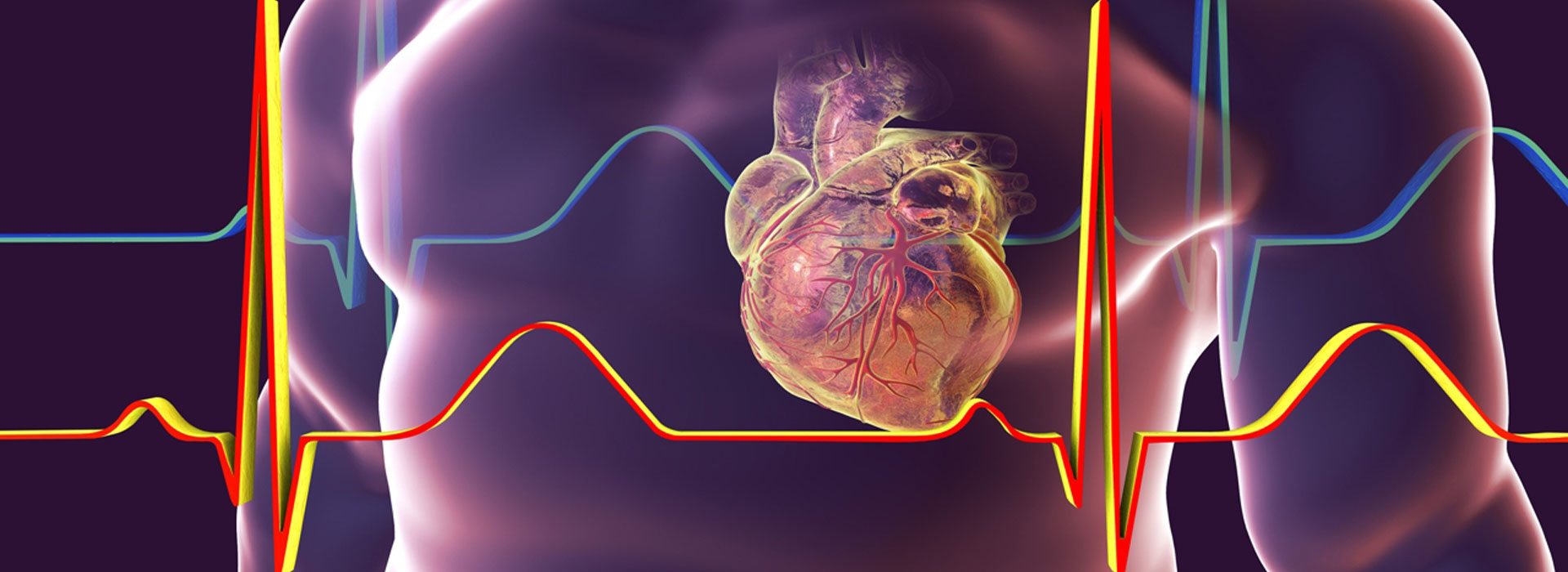
Hypertrophic obstructive cardiomyopathy
Hypertrophic cardiomyopathy is a condition that occurs in 1 : 500 and affects more than 20,000 patients in our country.
It is characterized by increased thickness of the wall of the left ventricle, most commonly the interventricular septum, i.e. the muscular wall that separates the two ventricles of the heart.
Gene mutation the main cause of its appearance
It is usually an inherited disease and is caused by gene mutations of heart muscle components. The manifestation and progression of the disease varies and can differ even between people with the same mutation coming from the same family. Thickening of the heart wall occurs mainly during adolescence and until the body's growth is completed, but it can also appear much later, after the 4th or 5th decade of life.
Symptoms
Patients may show no symptoms and lead a completely normal life. However, many patients experience discomfort, such as easy fatigue, shortness of breath and chest pain during physical exertion or at rest, palpitations, as well as fainting episodes or dizziness, which can significantly affect the quality of life.
In a small percentage of patients there is an increased risk of sudden death due to cardiac arrhythmia. In fact, this condition is the first cause of sudden cardiac death in young people and in young athletes.
In most patients, the thickening of the ventricular septum leads to a narrowing of the left ventricular outlet of the heart below the aortic valve, which prevents the smooth outflow of blood to the aorta (hypertrophic obstructive cardiomyopathy – HOCM). This is a dynamic state that can change even during the day, but may also increase significantly after taking certain drugs (e.g. certain antihypertensives), fluid or blood loss, physical exercise, change in body position (e.g. from supine to standing position), taking a meal or alcoholic beverages, leading to more intense symptoms or even fainting.
Diagnosis
The diagnosis of the disease is made by imaging the hypertrophy (echocardiogram, magnetic resonance imaging of the heart) in patients or relatives of patients with known disease.
Treatment
The treatment concerns patients who have discomfort, but also aims to prevent sudden death due to malignant arrhythmias. A patient's risk of sudden death is determined based on the presence of certain risk factors, and prevention consists of placing an implantable cardiac defibrillator.
Symptomatic treatment initially consists of taking drugs (beta-blocker, verapamil). For patients with hypertrophic cardiomyopathy and severe symptoms or repeated fainting episodes during physical exertion, open heart surgery (myectomy) was for decades the only effective treatment. In this, the chest is opened by the surgeon and an attempt is made through the aortic valve to remove part of the hypertrophic interventricular septum, in order to enlarge the outlet space of the left ventricle and improve the obstruction.
Modern, minimally invasive treatment
Ablation of the interventricular septum with ethanol (alcohol septal ablation – ASA) is the modern, minimally invasive treatment of obstruction in hypertrophic obstructive cardiomyopathy. During the procedure, a catheter with a balloon is advanced into a small branch of the left coronary artery, which supplies the hypertrophic part of the interventricular septum. Through this catheter a small amount of pure alcohol is injected and thus causes necrosis of the interventricular septum at this point, which gradually thins, resulting in the abolition or significant reduction of the obstruction.
The intervention is performed under local anesthesia, is carried out using a temporary pacemaker to prevent any electrical disturbances of the heart and with guidance through a special echocardiographic method, in order to precisely locate the area of the heart wall where the alcohol will be injected.
Due to its advantages and its minimally invasive nature, this method has prevailed in recent years over myectomy internationally, while it also has the advantage that it can be repeated if necessary during the follow-up of the patient after the initial operation.


